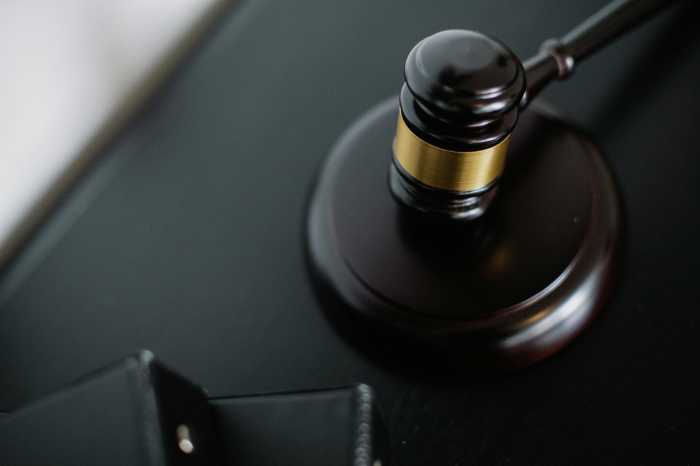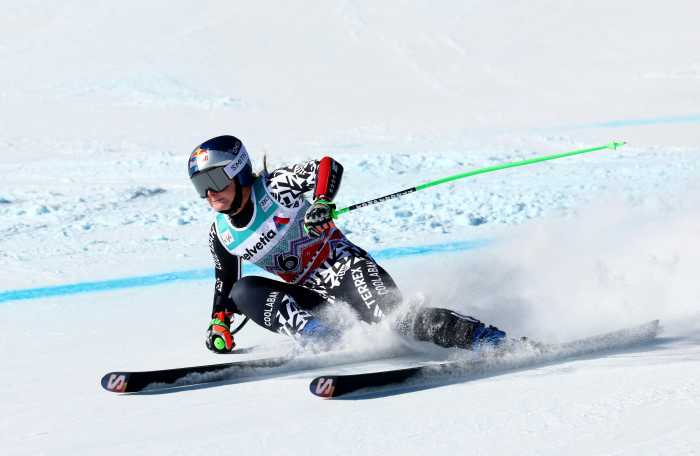SailGP, the nation-versus-nation, close-to-shore sail race series, is coming to New York City this Saturday and Sunday for the Mubadala New York Sail Grand Prix.
The New York race, the sixth stop of the Rolex SailGP 2025 Championship, will take place on a pre-set course between Manhattan’s Financial District, the Statue of Liberty, and Governor’s Island. The SailGP Race Stadium will be open each day from 1 p.m. ET to 6 p.m., and the races will be held between 3:30 p.m. and 5 p.m. on both days.
amNewYork spoke with Mike Buckley, the two-time world champion sailor who is the CEO and co-owner of the U.S. SailGP team, ahead of the races, about the history of SailGP and how he’s worked with a team of investors to grow the sport of sailing through creating an engaging fan experience and focusing on sustainability and inclusivity.
SailGP comes to life
Sailing has always been difficult to sell. The playing field is the ocean, naturally distancing fans from the sailors. It’s a niche sport that has often drifted beneath the sports giants of football, basketball, baseball, and soccer. A previous attempt to commercialize the sport, the Extreme Sailing Series, was scrapped because of financial non-viability.
For sailing to work, the sport needed to be brought closer to the fans, to cities around the world where the races could be seen from land. It needed a television product that broke down the intricacies of the niche sport. It needed to be easily understood, using technologies like the NFL’s yellow line to map out the race course. The mission was simple: Sailing needed to be easy for someone sitting on their couch to watch what was happening.
When Russell Coutts and Larry Ellison founded SailGP in 2018, that was exactly what they dreamt of: redefining the future of sailing.
Teams race in identical 50-foot foiling catamarans, known as F50s, that add another fascinating component that only comes with watching the races live.
“Racing a sailboat, most people would think you’re going five miles an hour,” Buckley said. “It’s slow, it’s boring. F50s, the boats that we race, can go over 60 miles an hour powered by the wind.”
When Buckley bought the team, he wanted to be involved in every role. He understood sailing well—he’s been a professional athlete for 20 years—and wanted to use that experience to help grow SailGP. The league is in its fifth season, but Buckley said it still feels like a startup.
Buckley’s role as a strategist on an F50 is all about making decisions and communicating them. When he makes a bad decision, he needs to quickly move on from it and focus on the next one. These skills have helped him take on the role of leading and building the business side of the team. Owning a company isn’t all roses, he said, just like the conditions on the water.
“You wake up in the morning and there’s always some new obstacle to overcome,” Buckley said. “That’s a lot like sailing. You can’t control Mother Nature. Nobody can.”
Innovation and elevation

When Buckley partnered with founding Uber engineer Ryan McKillen to buy the team, the duo set a few ground rules for finding investors to help grow the company.
It would be easy for them to assemble a team of like-minded people and create an average product. In the U.S., such a mindset may work for football or basketball. Not for a niche sport like sailing, which was still trying to get its hull in the water of the sports media landscape.
“We want to make sailing culturally relevant,” Buckley said.
Buckley and McKillen decided that a diverse group of investors, composed of accomplished executives, athletes, and celebrities gave them the best shot at innovating and elevating sailing. That list includes the Milwaukee Bucks’ former co-owner Marc Lasry, Baltimore Ravens wide receiver DeAndre Hopkins, and entrepreneur Gary Vaynerchuk.
The strengths of the investors have already paid dividends. Buckley described a situation where the team was having issues with social media outreach. Vaynerchuk, known for his work in marketing and social media, was there to help.
“To be able to shoot Gary and AJ at Vayner a text and say, ‘Hey, can we just bounce some ideas off you?’” Buckley said. “That’s something that is massively helpful.”
Thinking outside the box, Buckley and McKillen brought on DJ Khaled as a board member, largely for his experience promoting the sport of golf.
“It went from ‘Let’s go Golfing’ to ‘Let’s go Sailing,’” Buckley said.
The team has also worked with several corporate sponsors, including T Mobile, RedBull, and Tommy Hilfiger. This week, Amazon was announced as the team’s official retail partner.
Creating an experience
At a basketball game, the fan experience is paramount. Think of a New York Knicks game: you can get a pastrami sandwich at a Madison Square Garden concession stand. T-shirts are thrown into the crowd during commercial breaks. The Knicks collaborate with brands like New York or Nowhere to create exclusive merchandise for sale.
That, Buckley said, is the bar. As an emerging league, he wants SailGP to emulate a similar level of fan experience. He stressed the importance of keeping an eye on the other leagues’ ventures.
The experience at each specific race varies. In Cádiz, Spain, people watched the races from the cliffs. In New York, Buckley said, you can see the race from the top of a building in Hudson Yards.
Each race, though, has the same fundamental setup. The course is close to the shore, allowing organizers to set up grandstands and standing room viewing areas, with varying levels of hospitality.
Like any professional sports game, there will be food and drinks available for purchase, as well as merchandise for sale. Grandstand tickets on Governors Island start at $85, with discounts for children under 17 and families. For a better view and unlimited drinks, a premium ticket costs $250. You can also bring your own boat for $500.
“There’s really something for everybody,” Buckley said.
Sustainability and inclusivity
Sailing is one of the only global sports that claims the ocean as its playing field. That places a heavy responsibility on SailGP and its teams to take care of it.
The F50s used in the races are fully powered by the wind and don’t use gas motors, according to Buckley.
“The technology used in our boats, you see it being used in the shipping industry now,” he said. “There’s a lot of different innovations that we’ll see, kind of help renewable energy, whether it be windmills or AI to control windmill blades as the wind shifts, or more or less wind, it hits the wind turbine.
“There’s massive parallels, but it all comes back to authenticity. We get to race on the ocean, and it’s our responsibility to take care of it.”
Buckley and McKillen are also proud of their diverse ownership group — which Buckley said is the most diverse ownership group in the history of the sport.
SailGP is a co-ed league, with both men and women on each team. According to Buckley, the U.S. is the only team that has a woman — Anna Weis, an Olympic sailor — in a physical role, known as the grinder.
“Eleven other teams have two men grinding,” Buckley said. “We have a woman that grinds.
“Both sustainability and inclusivity are very close to our team, and me personally.”
This weekend’s races will be SailGP’s final American stop of the 2025 season. Australia won the inaugural New York event. New Zealand won the New York race last year. The U.S. will be looking for a win on home waters.
For more like this SailGP feature, visit AMNY.com
Also Read: https://www.amny.com/sports/mets-ronny-mauricio-callup-6-3-25/







































